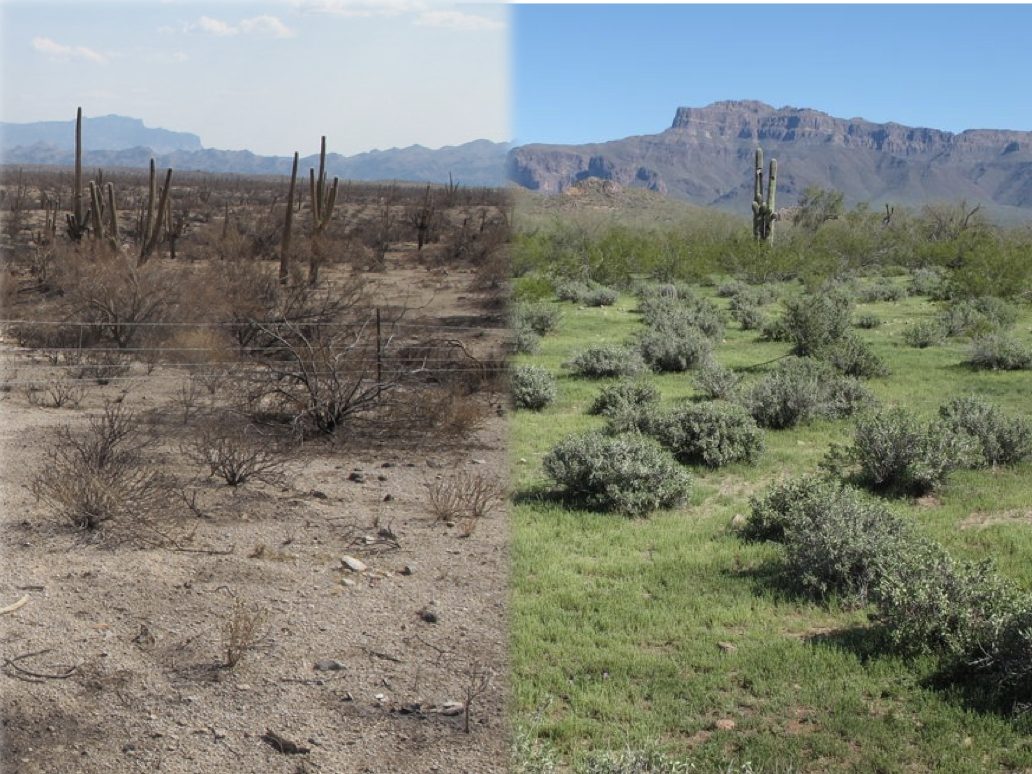

The current eco-pandemic of wildfires raging across the American West is widely being cited as another Earth-threatening impact of Climate Change. In light of this, support is growing for the claim that the best, and perhaps the only effective way to reduce the size, frequency, and severity of these fires is to apply the Green New Deal, By hastening our transition to wind and solar as a source of power, and pumping less carbon dioxide into the atmosphere via fossil fuels, Green New Deal advocates argue, we can cause less global warming, less global drying, and less global flammability.
This brings up a very important and so far unaddressed question. Do we have any real evidence that this tactic actually works to do what its advocates claim it will do — reduce wildfires. We do have evidence of some negative effects the GND can have on our lifestyle. Consider the power blackouts fossil fuel use reduction has caused in California. Then consider the negative impacts this can have on our economy.
In contrast, there is concrete evidence of one effect the Green New Deal can have that is positive in the eyes of its advocates, an effect of which they are apparently very aware. It provides a strong means to get them elected to public office in liberal venues. That may be one of the reasons they pursue it so vigorously. AOC of NYC can certainly attest to that,
For the sake of discussion, however, let’s consider that making the switch from fossil fuel to wind and solar power can reduce the frequency and severity of wildfires. Remaining aware that this transformation can’t and won’t be made overnight it makes sense to ask how many years will it take for enough of the Green New Deal to be applied to actually reverse Climate Change and reduce earthly flammability? Ten? Twenty? a century? (POTUS candidate Biden estimates 15 years – by 2035). While that is happening, it makes sense to ask, how many of our forests, other ecosystems, and communities will burn? And how long will it take for them to recover? If they ever recover?
So… Even if you support the Green New Deal as a wildfire solution it makes sense to develop and apply a method of dealing with big burns that works in a more timely, direct, and confirmable manner than changing the Earth’s climate. That way we won’t be forced to watch the Earth burn while we wait for the Deal to work.
At present, there is more interest in this direct approach to the wildfire problem on the political right than on the left (for which the GND is the sole solution). However, the more direct remedy to deal with the current wave of wildfires raging across the American West being proposed by those on the right has its problems, too. Conservatives cite dealing with wildfires as a matter that must be solved by better ”forest management”
Consider the following quote by Donald Trump (which he repeated during the first 2020 presidential debate): “You gotta clean your floors, you gotta clean your forests — there are many, many years of leaves and broken trees and they’re like, so flammable, you touch them and it goes up.”
Or Rush Limbaugh: “Do you know why the fires are spreading so rapidly? It’s because the Democrats do not permit the removal of all of the deadwood that ends up in a forest year after year after year… If you don’t go in there and clear-cut that stuff out of there, you are essentially allowing the buildup of kindling wood.”
But what if there are few trees or no trees at all? Take a look at an area scorched by the 193,455 acre Bush Fire near Phoenix, Arizona in June of 2020.

WHAT TREES THAT COULD HAVE BEEN “FORESTRY MANAGED” TO PREVENT THIS WILDFIRE?
In fact, while I was driving around central Arizona taking photos of this and other recent burns I didn’t find any area of burned forest to photo. Much of Arizona, after all, is rangeland and has been since the time of the Indians and bison. The same is true of much of the American West. That’s why its theme is ”Home On The Range” not ”Home In The Woods.”
In light of that and of all the treeless expanses and bare dirt shown in these aftermath photos it is logical to ask, ”How did these fires spread? How did they get so huge?”
Here are some photos taken near the wildfire areas that make it very clear what carries fires like these over hundreds of thousands of acres of open land.

UNBURNED AREA REVEALS GRASS AS FIRE CARRIER.

BURNED AREA NEARBY — GRASS IS NOW ASH
These photos also make it clear that Trump, Limbaugh, and other conservatives have been right and wrong at the same time when it comes to their solutions to the wildfire problem. They were wrong in casting wildfire as an issue that has to do solely with forests and forest management. They were right, however, in the fact that the solution they proposed— ”cleaning your floors,” i.e., removing debris, dry grass, or any other materials that are so flammable” works on rangelands as well as forests, when applied appropriately.
There are two reasons this realization is so extremely important. The first reason proper rangeland management can be such an effective means of reducing wildfire danger, even in forests is because rangelands border, surround, and intersperse through forests throughout much of the West. Effectively fire-proofing these grassy areas therefore reduces fire danger to any forests involved as well.
Another very important aspect of the realization that rangeland management can be an effective way to reduce wildfires, even in forests, involves cost. Fire-proofing forests is expensive. It requires employing work crews with chain saws, weed whackers, tractors with scraper blades and lift-loaders, plus dump trucks etc. to thin (cut) trees, brush and weeds; to bulldoze and pile waste; and to haul out the excess. It also requires repeating this when new burnables sprout and accumulate. Expensive!
Rangeland management, on the other hand, can be (and usually is) easier, quicker, less expensive, and therefore more repeatable than forest management, even within forests, because it can be effectively done with animals. Animals graze and browse burnable materials and mulch much of what they don’t eat into the soil. At the same time they spread seeds and till them in along with fertilizer, which they supply. This causes the growth of new, green, moist less flammable plants which sequester carbon in their leaves and stems.
How much of the areas shown in the photos you’ve just seen would have burned if their rangeland ”floors” had been cleaned? Here are some images to give you a clue.

RANGELAND FLOOR BEING CLEANED BY ANIMALS — FIRE DANGER REDUCED?

FLOOR CLEANED EVEN MORE — BURN THIS! OVERGRAZED? WILL IT RECOVER? CHECK NEXT.
Is it true that animals grazing and browsing burnable materials and mulching much of what they don’t eat into the soil along with seeds they spread and fertilizer they supply, actually causes the growth of new, green, moist less flammable plants? Check this…

RECOVERED? THIS PHOTO WAS TAKEN 5 MONTHS AFTER THE “FLOOR CLEANED EVEN MORE” PHOTO ABOVE,
TIME FOR ANIMALS TO COME BACK AND RE-MANAGE BEFORE IT BECOMES DRY AND BURNABLE

MANAGEMENT OF RANGELAND AND FOREST COMBINED – CLEANED, GREEN, AND FIRE RESISTANT.
The plants that grow as a result of fire prevention via animals sequester carbon in their leaves and stems and even pump carbon into the soil via their roots as they engage in the repetitious ”lub-dub” of being grazed and regrowing. That’s why the soils of the historic Great Plains rangelands were black to a depth of a number of feet. Rangeland management applied by animals thus remedies Climate Change as well as wildfire. Add to this the matter that animals don’t require paychecks but receive their reward in the form of the flammable vegetative material they consume, and you’ve got a Green New Real Deal.
There’s more: One other advantage of using rangeland management to deal with the wildfire problem, even in forests, is that animals are also effective restorers of land damaged by previous wildfire. They do this via the processes just described: mulching, seeding, tilling, fertilizing, causing the growth of new plants and sequestering carbon in leaves, stems, roots, and soil. Thus restored the land is also fire-proofed to a degree.
Put all this together and you have what amounts to a Really Green, Really New, Really Real Deal.
More info and images on this topic is available in other posts on this site:
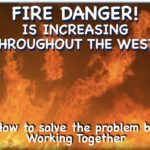


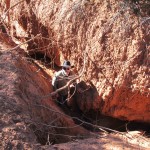

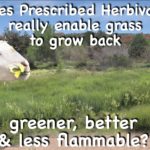
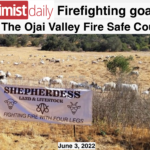
Dan
A note from the choir. So many of us have been touting this for quite a while. Urban folks, including POTUS and Rush somehow need to understand that the world’s rangelands sequester carbon (more when grazed) more effectively than forests. Not sure what it will take but I applaud you for not giving up!
Thank you for this excellent article, Dan!